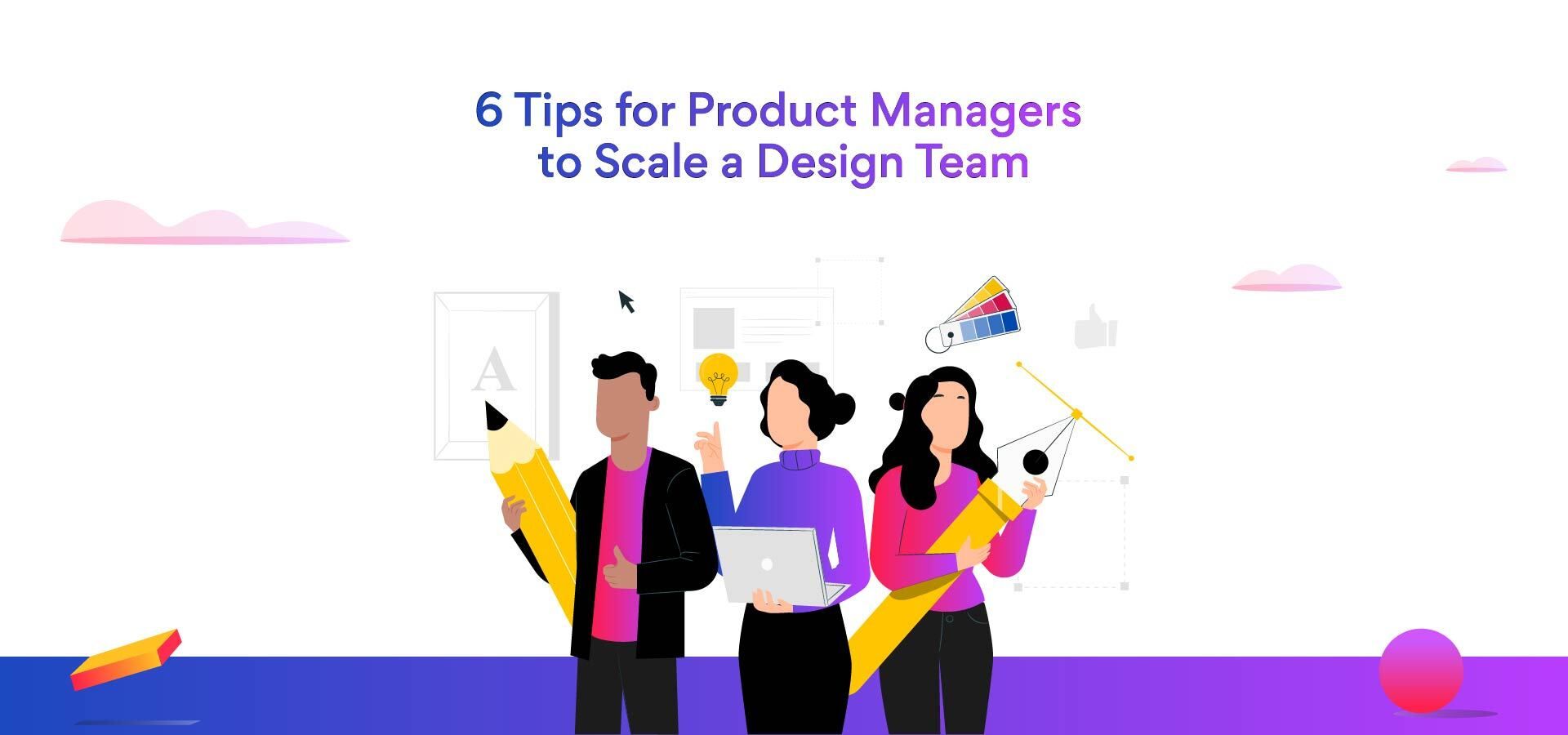
6 Tips to Scale a Design Team: A Guide for Product Managers
What is scaling? How do you scale a product design team? How do you structure a design team? How can product managers scale a design team? Looking for answers to such questions? Let’s figure them out in this blog post.
What is scaling?
Scaling is setting the stage to enable growth in a company. Scaling requires planning, funding, and the right systems, staff, processes, technology, and partners.
How do you scale a design team?
Companies that prioritize design have more devoted customers, better stock performance, higher sales, and higher valuations, according to recent research from Forrester, McKinsey & Company, and the UK Design Council.
But how can product managers scale the design team to accommodate the increased demand for design?
Here are the action steps to follow…
-
Understand the project requirements.
Without guidance and analysis, a design becomes aimless. So, it is best to first comprehend the project’s requirements and goals before starting.
It is your responsibility as a team leader to see the end goal and use the appropriate resources and team members to get there.
Most times, every single one of your team members yearns for a sense of direction. Once they have the direction they require to continue going forward, they become a lot more productive and efficient. -
Make a long-term plan.
The scaling strategy addresses all work-related tasks, including technical requirements, team structure, and resource management.
So, when hiring people to begin scaling the project, it is crucial to take care of the planning. A plan that worked for the old team may not work for the new team. And so, as a product manager, you must continually develop the plan as your team expands.
You can also employ a consultant to structure the process from scratch, assess the project’s existing state, and create a transition plan if you have other higher-priority tasks at hand. -
Prioritize the deliverables.
Ensure you prioritize tasks appropriately and drive activities in line with the plan.
For instance, involving experts knowledgeable about the key principles of a successful e-commerce web-based product is a wise move if the project’s objective is to stay current with e-commerce web design trends. This step will shorten iteration times and streamline regular checks. -
Don’t settle for less. Find specialists.
A team’s caliber heavily influences the success of a product or service. Therefore, it’s critical to choose a product designer with the right mix of abilities early on in the project.
If you solely rely on local expertise, you can have a shortage of specialists. This challenge can arise especially in areas that require deep technical expertise, such as software prototyping and 3D design. So go above and beyond your generic hiring process and look for talent with the right skill set and experience. Don’t hesitate to hire international talent. -
Design an efficient onboarding process
All newly appointed professionals must have access to essential information, the team’s contact details, and a mentor. A newcomer must also be familiar with technical information about the company’s code standards, the project’s history, organizational structure, and other team members’ skills. So, it is crucial to appoint an internal team member to help the new members.
As the product manager, you can take a few more steps to make their onboarding process a delight. Here’s how.
- Welcome letter: Include warm greetings and an overview of the team and the project the new member will be working on. Here, the intention is to set the right tone and establish expectations for the onboarding process.
- Non-technical rally: Provide a general description of the project’s organizational structure and fundamental procedures and standards. In addition, communicate the project’s current status and short-term goals.
- Technical rally: Go over the project’s design standards, methods, component architecture, AND codebase. Highlight the principles and trends in UX/UI design that the organization follows.
- Necessary materials: Hand them a special purpose folder, including information on active communication channels, Figma sections, meeting schedules, essential stakeholder contacts, and a project glossary. This folder can also connect to current organizational charts and other helpful data.
- Welcome letter: Include warm greetings and an overview of the team and the project the new member will be working on. Here, the intention is to set the right tone and establish expectations for the onboarding process.
-
Set proper KPIs
Clear KPIs motivate team members, establish expectations, and enable structured performance analyses. Work closely with your team members while setting the objectives you want them to work on. This practice helps employees understand the project and company goals and promotes their professional growth.
The following six steps will help you set effective KPIs for your team:
- Examine every team member’s job description and make any required adjustments.
- Write them a solid job description if they don’t already have one.
- Identify 5 to 7 important responsibilities.
- Set specific parameters to measure the newly assigned work. For example, speed, rate of delivery, continuous improvement, and more.
- Give weightage to each parameter, depending on its value to the project goal.
- Analyze and compare the sum of parameters of similar job positions. `
Bottom line
The intense competition in the IT industry is pushing businesses to grow and scale their design teams quickly. Remember, a solid design team can help you set your product or service a class apart from the rest. We hope that the above steps help you scale and make the best of your design team.
If you’re looking to hire developers with strong technical and communication skills at unbeatable prices, ready to work in your timezone, Try Turing. Turing has a global talent pool of developers with developers across 100+ skills.
FAQs
- How do you scale a product design team?
Here are six steps to scale a product design team:
- Understand the project requirements
- Make a long-term plan
- Prioritize the deliverables
- Don’t settle for less. Find specialists
- Design an efficient onboarding process
- Set proper KPIs
- Understand the project requirements
- How do you scale your team?
Here are four steps to scale your team:
- Be aware of your team’s growth
- Start early
- Find out the positions to be filled
- Identify suitable candidates
- Be aware of your team’s growth
- How do you structure a design team?
There are three common design team structures you can follow: Centralized, cross-functional, and flexible. Think of it like a design team organization chart that helps to map out where designers sit within a given team and what the design team’s responsibilities are. - How do you scale a design?
Here are five steps to scale a design:- Look beyond the digital space for inspiration.
- Make a redesign an excuse to align messaging.
- Get the whole company involved in user testing.
- Don’t just focus on the data.
- Embrace the fact that you were wrong in the first place.
Tell us the skills you need and we'll find the best developer for you in days, not weeks.


